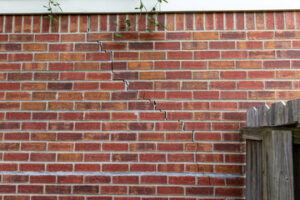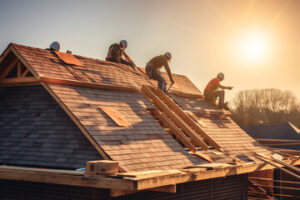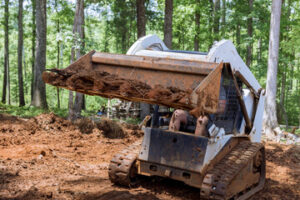Foundation Repair Plano TX is crucial to preserving the structural integrity of your home. Even minor cracks can escalate into major problems if left unattended.

There are several different methods for repairing a damaged foundation. Typically, the process involves installing vertical supports under your house to raise it back to its original elevation.
Cracks in foundations are a common problem that affect many homeowners. Some are quite minor and others indicate serious structural issues that need addressing right away. Knowing the different types of foundation cracks and how to repair them can empower you to take the appropriate action in your home, preserving the structural integrity of your foundation while ensuring your safety and comfort.
Hairline cracks that are less than 1/8 inch wide in concrete block foundation walls are relatively common and are not necessarily a cause for concern. However, cracks that are wider or appear to be getting larger over time are more of a concern as they may indicate a more serious issue with your foundation.
Other warning signs include gaps around doors and windows, which can signal structural shifts and need to be addressed immediately. If your doors and windows stick or jam when opening or closing them, it may also be a sign of structural shifting.
The type of soil your house is built on is another factor. Expanding clay soils can swell and shrink with moisture changes, leading to uneven settlement of your foundation. This type of settlement is referred to as differential settlement and can lead to severe cracking in your foundation over time.
If you have a concrete foundation, widening or lengthening cracks can be repaired with epoxy injection. This technique involves cleaning the crack, preparing it for injection, and injecting the solution. The epoxy will fill the gap and help restore the strength of your foundation.
Non-structural cracks can also be repaired with epoxy injection. The process requires cleaning the crack, preparing it for injection, injecting the solution, and monitoring and repairing any future issues. Wet non-structural cracks require additional steps, including sealing the crack to prevent further damage from water intrusion and assessing the extent of any potential problems.
Significant diagonal cracks are a serious problem that need to be evaluated by a professional right away. The cracks may need to be underpinned with helical or push piers to stabilize the structure and prevent further movement.
Shifting
The foundation of a home or building relies on the stability of the soil it sits on. But if the soil shifts or settles unevenly, it can compromise the integrity of the foundation and lead to serious structural problems. The occurrence of these problems can also impact the energy efficiency and safety of the building. Warning signs of foundation settling or shifting include gaps between window frames and walls, doors that stick, or sloping floors. The best way to avoid these issues is through regular inspections and early detection.
The most common sign of foundation settling or shifting is cracks in the walls and floors, with horizontal cracks typically signaling more significant movement than vertical ones. If these cracks widen over time, it is a sign that the foundation needs to be repaired.
Foundation settlement can also be exacerbated by nearby construction or groundwater changes. These factors can cause vibrations, create hydrostatic pressure on the soil, and force it to shift or sink.
Local weather can also play a major role in foundation problems, with hot and dry summers leading to shrinkage of the soil, while periods of heavy rain cause it to expand. This cycle puts constant stress on the foundation, increasing the likelihood of settling or shifting.
A variety of repair methods can be used to fix foundation issues. For minor settling, slabjacking (also known as mudjacking) can be used to lift the foundation back to its original position. For more severe issues, underpinning with piers is often necessary to provide long-term stabilization.
In addition to causing major structural damage, shifting and settling in foundations can lead to many smaller frustrations for homeowners. Door and window frames that become misaligned can interfere with the symmetry of interior design, while doors and windows that stick make it difficult to open and close them. These problems can be prevented through regular inspections and by looking out for early warning signs, such as gaps between different surfaces, sloping floors, or doors and windows that don’t fit properly. These simple steps can save homeowners a lot of hassle and expense down the road.
Moisture
Moisture is a major reason for foundation problems, and it’s a common cause of cracking. This is because concrete is porous and moisture can easily penetrate it. If it accumulates in the soil around a home, hydrostatic pressure can build up against the foundation walls. Over time, this can create hairline cracks or more noticeable gaps in the foundation. These cracks allow water to seep in, which can weaken the structure and exacerbate existing cracks.
This problem can be caused by a number of things, including poor construction and inadequate drainage. It can also be caused by extreme weather conditions, such as heavy rains or prolonged droughts. These changes in the environment can affect the soil, causing it to swell up and then sink down. This can cause the foundation to shift and cause moisture issues in the home.
To prevent moisture problems, a few simple measures can be taken. These include:
Installing a Drain Tile System
A drain tile system is an excellent way to protect your foundation from moisture damage. These systems can be installed both indoors and outdoors, and they’re ideal for monolithic concrete foundations. These systems work by removing excess moisture from the soil around the foundation and preventing hydrostatic pressure.
In order to make sure these systems are working properly, homeowners should check the exterior of their home regularly. This can be done by looking for puddles of standing water after it rains, a musty smell in the basement, or visible signs of moisture damage.
If you find any of these signs, a foundation repair expert should be called to inspect the foundation. They can repair the leak and seal any cracks in the foundation to ensure that moisture is not leaking into your home.
Once the damaged areas are repaired, a waterproof membrane should be applied to the exterior of your foundation. This can be a liquid-applied coating, sheet membrane, dimple board, or a combination of these. It is important to protect your foundation from moisture damage to extend its lifespan and the life of your home.
Structural Issues
The good news is that structural issues can often be repaired without the need for a full foundation replacement. A comprehensive inspection is necessary to identify the severity of cracks, settling, shifting and other issues. The more time that passes between noticing an issue and getting it fixed, the more damage may occur. Keeping a close eye on warning signs such as cracks of any size, doors and windows that don’t open or shut easily, even floors and ceilings is crucial for early identification.
While hairline-thin cracks are common and typically not a concern, widening and lengthening ones suggest that the underlying cause needs to be addressed. A crack’s slant may also indicate the direction in which the structure is shifting. For instance, diagonal cracks often suggest that the foundation is experiencing differential settlement.
Another key sign of potential foundation problems is sinking. This is usually caused by a loss of soil stability beneath the home. To avoid sinking, steel shoring or underpinning techniques can be applied to stabilize the foundation. This is a quick and cost-effective solution that also helps to prevent collapses in the future.
A home’s foundation can be weakened by a variety of factors, including moisture or soil pressure. If you suspect that your foundation has a problem, it is crucial to act quickly. A professional can assess the situation and recommend an appropriate repair method.
There are several different methods of repairing a foundation, depending on the severity of the damage and how much support is needed. The most cost-effective option is the pressed piling method, which involves pressing concrete or steel pilings into the ground until they reach stable soil. This is a quick and easy repair solution, but it may not provide as strong or long-lasting a foundation as other options.
A structural engineer can advise on the best course of action for a home’s foundation and recommend a solution that is compliant with building regulations and long-lasting. In addition to repairs, other preventative measures that can help maintain a solid foundation include ensuring that water is draining away from the property, installing gutters, and avoiding landscaping near the foundation.


